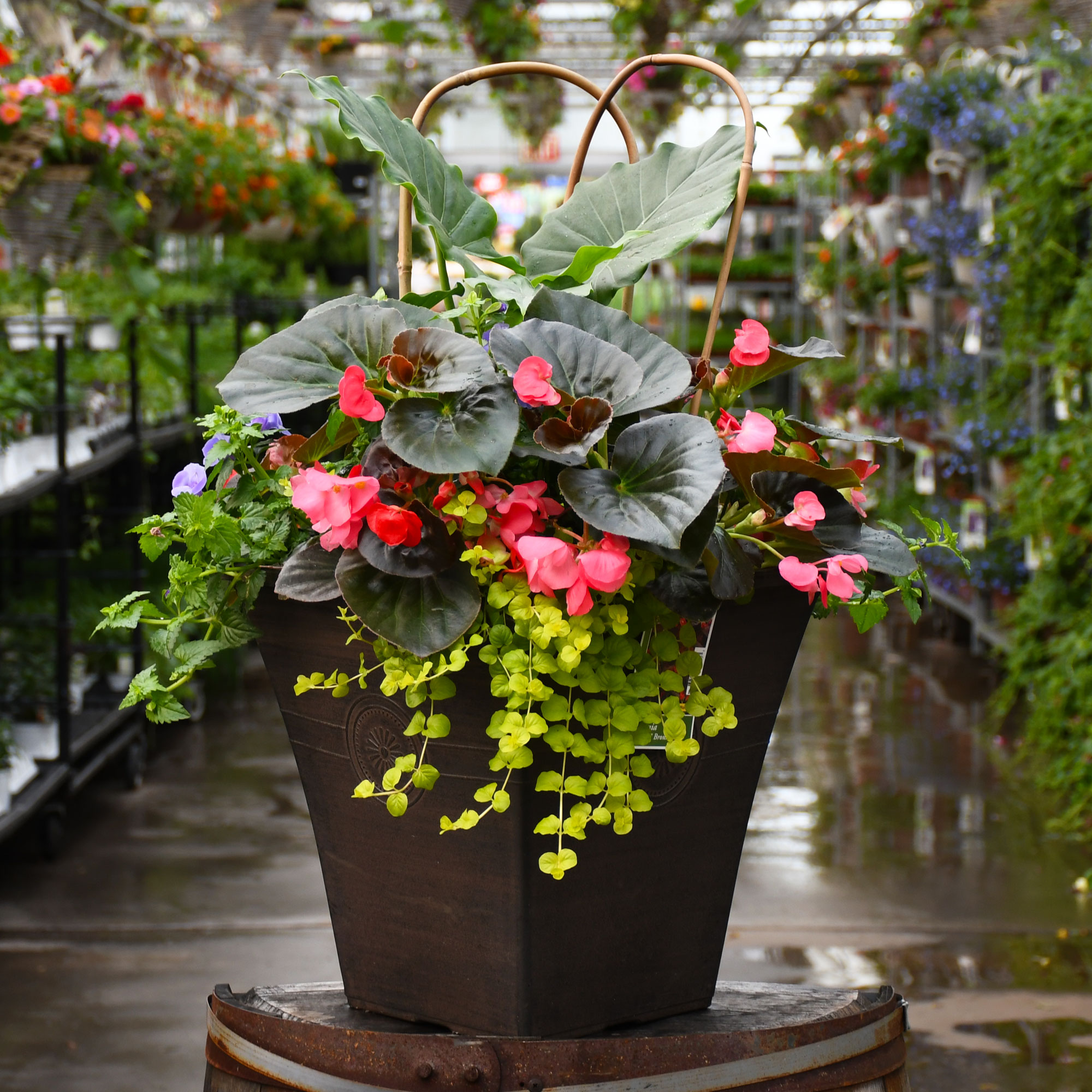Alocasia Baginda, Elephant Ear 'Pink Dragon'


Out of stock
Temporarily Out of Stock- Sun Preference
- Part-Sun
Description
Pink Dragon Alocasia | Alocasia baginda 'Pink Dragon'
Other Names: Elephant's Ear
This gorgeous Alocasia features deep green, shiny, ovate leaves accented with contrasting silvery-white veins, burgundy-brown undersides, and pink petioles; a stunning tropical accent plant for indoor areas with bright, indirect light.Direct from the Grower
When you see the Gerten Grown logo on our annuals, you know you're getting a fresh plant directly from our greenhouse. We've been perfecting our growing process for over four generations and pride ourselves on providing local quality and freshness to our customers. Better pricing on better quality plant material, that's Gerten Grown.
Details
Pink Dragon Alocasia's attractive large glossy oval leaves remain dark green in color with distinctive white veins and tinges of silver throughout the year on a plant with an upright spreading habit of growth. The pink stems are very effective and add to the plant's interest.
This is an open herbaceous evergreen houseplant with an upright spreading habit of growth. Its relatively coarse texture stands it apart from other indoor plants with finer foliage. This plant usually looks its best without pruning, although it will tolerate pruning.
When grown indoors, Pink Dragon Alocasia can be expected to grow to be about 4 feet tall at maturity, with a spread of 3 feet. It grows at a medium rate, and under ideal conditions can be expected to live for approximately 5 years. This houseplant should be situated in a location that that gets indirect sunlight at most, although it will usually require a more brightly-lit environment than what artificial indoor lighting alone can provide. It does best in average to evenly moist soil, but will not tolerate standing water. The surface of the soil shouldn't be allowed to dry out completely, and so you should expect to water this plant once and possibly even twice each week. Be aware that your particular watering schedule may vary depending on its location in the room, the pot size, plant size and other conditions; if in doubt, ask one of our experts in the store for advice. It will benefit from a regular feeding with a general-purpose fertilizer with every second or third watering. It is not particular as to soil pH, but grows best in rich soil. Contact the store for specific recommendations on pre-mixed potting soil for this plant. Be warned that parts of this plant are known to be toxic to humans and animals, so special care should be exercised if growing it around children and pets.
There are many factors that will affect the ultimate height, spread and overall performance of a plant when grown indoors; among them, the size of the pot it's growing in, the amount of light it receives, watering frequency, the pruning regimen and repotting schedule. Use the information described here as a guideline only; individual performance can and will vary. Please contact the store to speak with one of our experts if you are interested in further details concerning recommendations on pot size, watering, pruning, repotting, etc.
-- THIS IS A HOUSEPLANT AND IS NOT MEANT TO SURVIVE THE WINTER OUTDOORS IN OUR CLIMATE --
More Information
| Common Family Name | Elephant Ear |
|---|---|
| Sun Preference | Part-Sun |
| Plant Life Cycle | Annual |
| Mature Height (Range) | 37" - 48" |
| Mature Spread (Range) | 24" - 36" |


